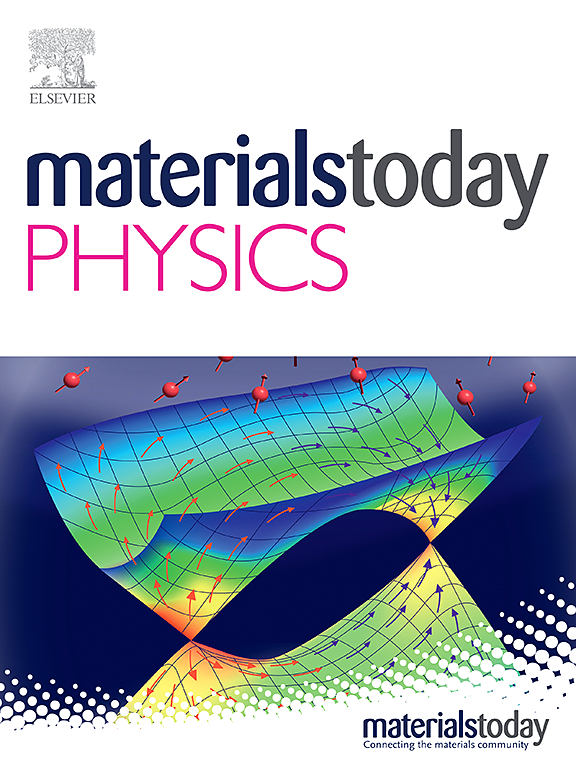Uniaxial zero thermal expansion in low-cost Mn2OBO3 from 3.5 to 1250 K
IF 10
2区 材料科学
Q1 MATERIALS SCIENCE, MULTIDISCIPLINARY
引用次数: 0
Abstract
Unique zero thermal expansion (ZTE) materials are valuable for use in precision instruments, including electronics, aerospace parts, and engines. However, most ZTE materials have a temperature range less than 1000 K under which they do not expand. In this study, we present a uniaxial ZTE in the low-cost Mn2OBO3 with a thermal expansion coefficient of −4(1) × 10−7 K−1 along the X1 principal axis from 3.5 to 1250 K. The monoclinic structure of Mn2OBO3 remains stable over the entire temperature range in ambient conditions. Considerable thermal contraction on the BO3 trigonal planar and thermal expansion on the MnO6 octahedra combine to produce uniaxial ZTE. Temperature-dependent Raman scattering reveals anharmonic low-frequency modes associated with MnO6 Rigid Unit Modes (RUMs), which likely play a critical role in driving thermal contraction in the BO3 trigonal planar. No charge order-disorder transition, which could cause thermal contraction, was observed up to 1250 K.
低成本Mn2OBO3的单轴零热膨胀从3.5到1250 K
独特的零热膨胀(中兴)材料在精密仪器中有价值,包括电子,航空航天零件和发动机。然而,大多数中兴材料的温度范围小于1000k,在此温度范围内它们不会膨胀。在这项研究中,我们在低成本的Mn2OBO3中提出了一个单轴中兴通讯,沿着X1主轴从3.5到1250 K的热膨胀系数为-4(1)×10-7 K-1。在室温条件下,Mn2OBO3的单斜晶型结构在整个温度范围内保持稳定。BO3三角形平面上的大量热收缩和MnO6八面体上的热膨胀共同产生单轴中兴。温度相关的拉曼散射揭示了与MnO6刚性单元模式(RUMs)相关的非谐波低频模式,这些模式可能在驱动BO3三角形平面的热收缩中起关键作用。在1250k温度下,未观察到引起热收缩的有序-无序转变。
本文章由计算机程序翻译,如有差异,请以英文原文为准。
求助全文
约1分钟内获得全文
求助全文
来源期刊

Materials Today Physics
Materials Science-General Materials Science
CiteScore
14.00
自引率
7.80%
发文量
284
审稿时长
15 days
期刊介绍:
Materials Today Physics is a multi-disciplinary journal focused on the physics of materials, encompassing both the physical properties and materials synthesis. Operating at the interface of physics and materials science, this journal covers one of the largest and most dynamic fields within physical science. The forefront research in materials physics is driving advancements in new materials, uncovering new physics, and fostering novel applications at an unprecedented pace.
 求助内容:
求助内容: 应助结果提醒方式:
应助结果提醒方式:


